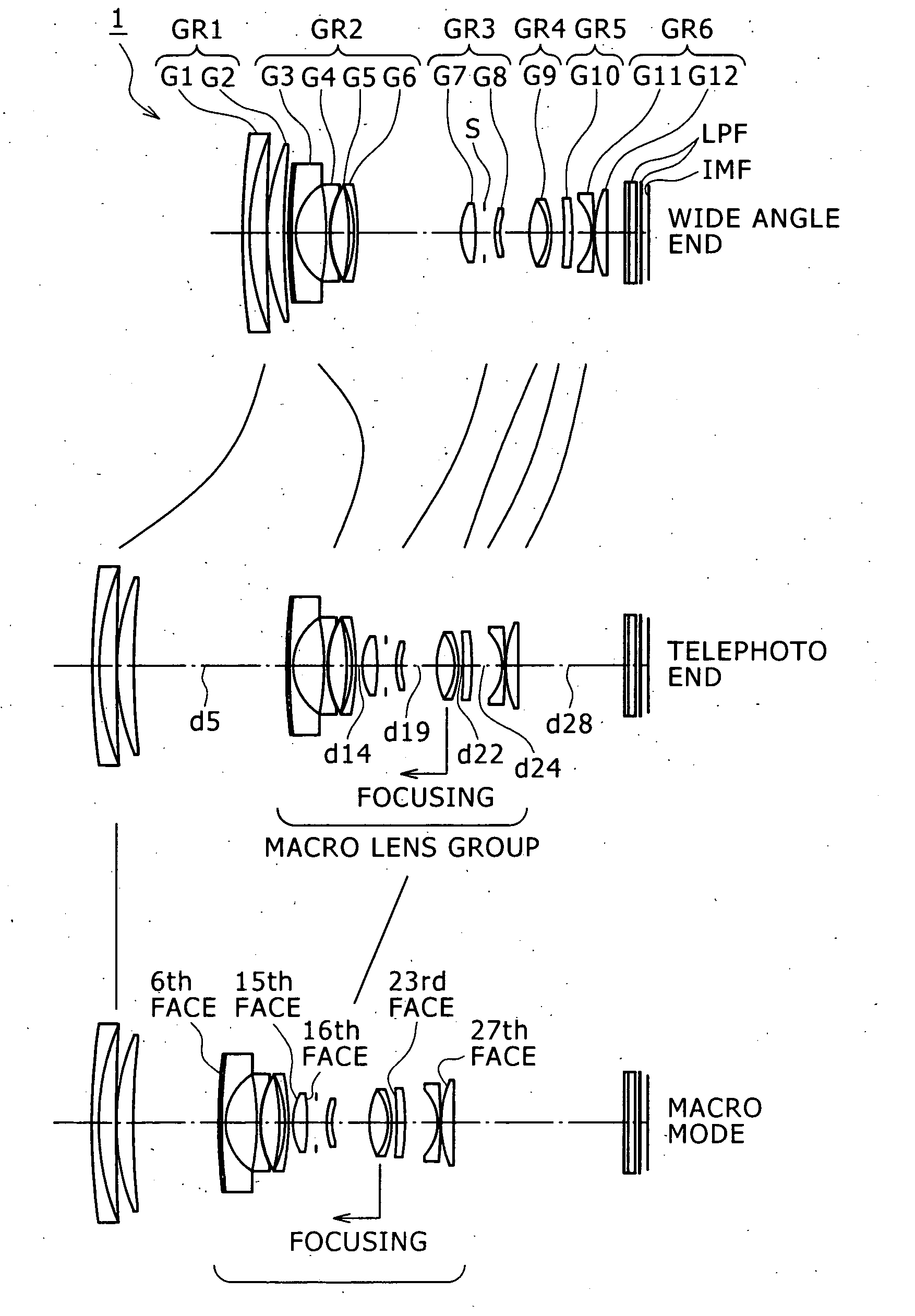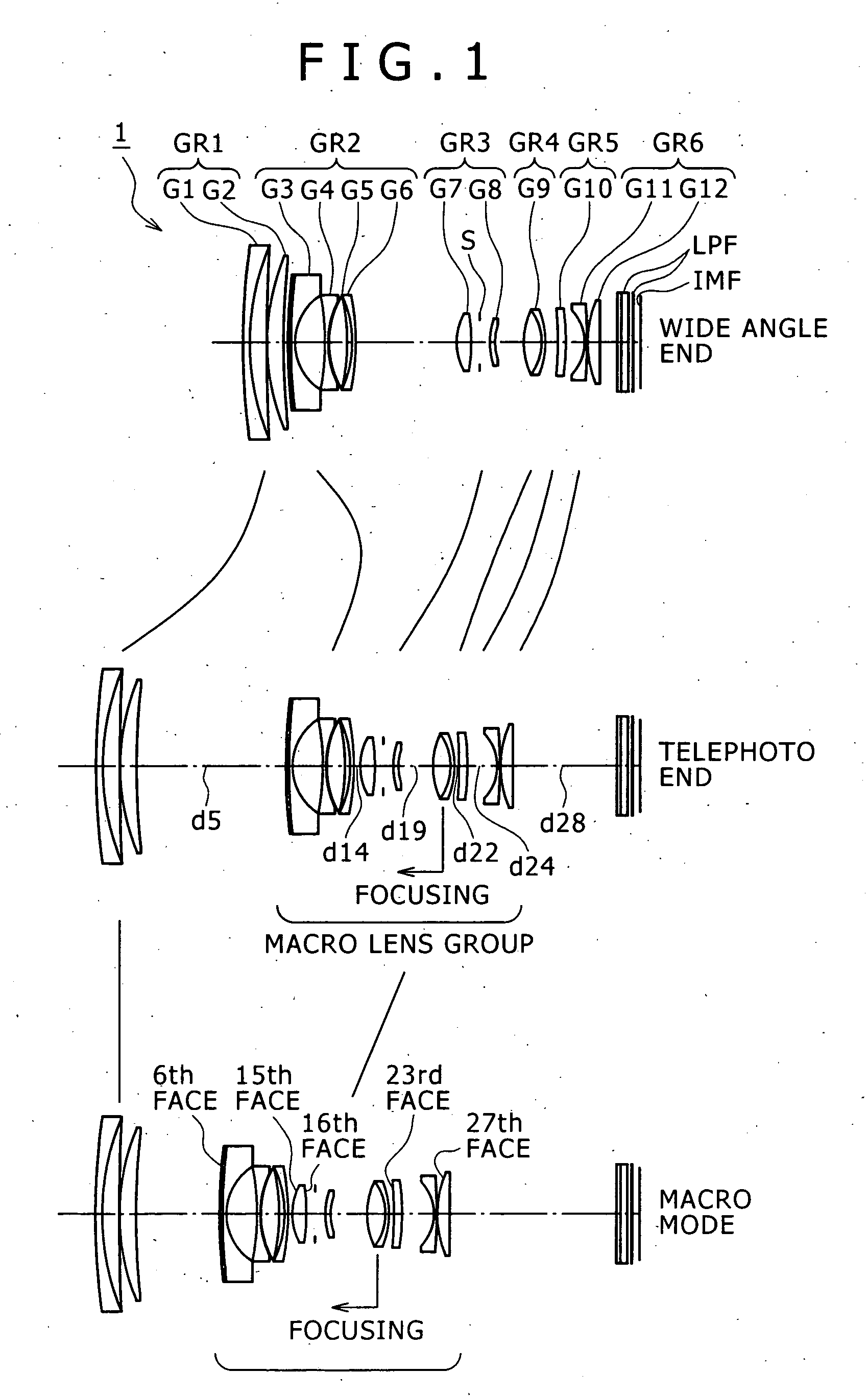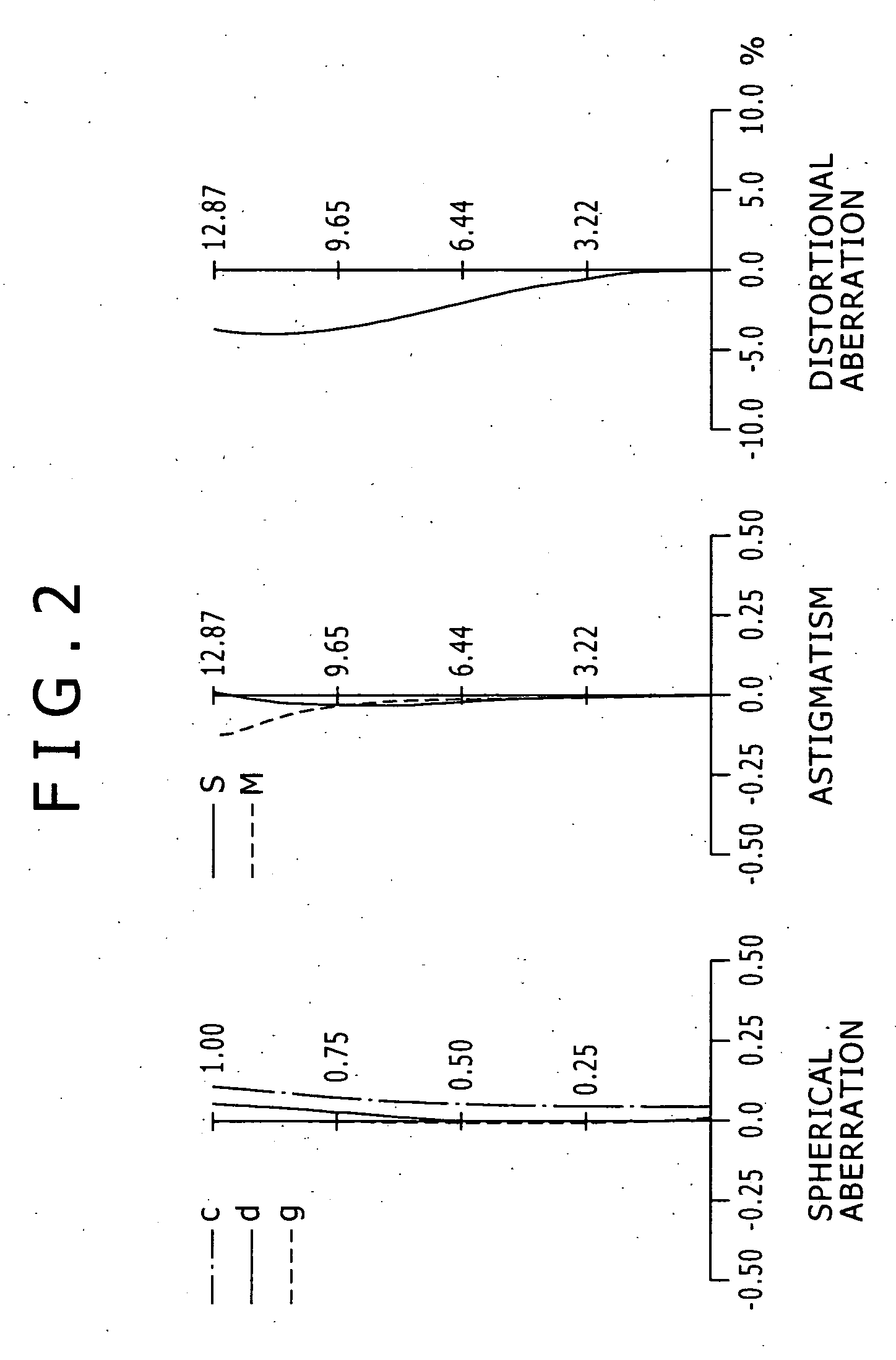Zoom lens and image pickup apparatus
a technology of image pickup and zoom lens, which is applied in the field of new cameras, can solve the problems of difficulty in simultaneously achieving further increase in angle and magnification, low magnifying power, etc., and achieve the effects of improving image quality, and reducing the difficulty of adjusting the spherical aberration
- Summary
- Abstract
- Description
- Claims
- Application Information
AI Technical Summary
Benefits of technology
Problems solved by technology
Method used
Image
Examples
first embodiment
[0057]FIG. 1 shows a configuration of a zoom lens according to the present invention. Referring to FIG. 1, the zoom lens 1 shown includes a first lens group GR1 having a positive refracting power, a second lens group GR2 having a negative refracting power, a third lens group GR3 having a positive refracting power, a fourth lens group GR4 having a positive refracting power, a fifth lens group GR5 having a low refracting power, and a sixth lens group GR6 having a negative refracting power, disposed in order from the object side. Upon power variation, the lens groups move on the optical axis as indicated by a solid line arrow mark in FIG. 1.
[0058] The first lens group GR1 includes a cemented lens G1 composed of a negative lens and a positive lens, and a positive lens G2. The second lens group GR2 includes a negative lens G3 having a composite aspheric face on the object side, a negative lens G4, a positive lens G5 and another negative lens G6. The third lens group GR3 includes a positi...
second embodiment
[0066]FIG. 6 shows a configuration of a zoom lens according to the present invention. Referring to FIG. 6, the zoom lens 2 shown includes a first lens group GR1 having a positive refracting power, a second lens group GR2 having a negative refracting power, a third lens group GR3 having a positive refracting power, a fourth lens group GR4 having a positive refracting power, a fifth lens group GR5 having a low refracting power, and a sixth lens group GR6 having a negative refracting power, disposed in order from the object side. Upon power variation, the lens groups move on the optical axis as indicated by a solid line arrow mark in FIG. 6.
[0067] The first lens group GR1 includes a cemented lens G1 composed of a negative lens and a positive lens, and a positive lens G2. The second lens group GR2 includes a negative lens G3 having a composite aspheric face on the object side, a cemented lens G4 of a negative lens and a positive lens, and a negative lens G5. The third lens group GR3 inc...
third embodiment
[0074]FIG. 11 shows a configuration of a zoom lens according to the present invention. Referring to FIG. 11, the zoom lens 3 shown includes a first lens group GR1 having a positive refracting power, a second lens group GR2 having a negative refracting power, a third lens group GR3 having a positive refracting power, a fourth lens group GR4 having a positive refracting power, a fifth lens group GR5 having a low refracting power, a sixth lens group GR6 having a negative refracting power, and a seventh lens group GR7 having a positive refracting power, disposed in order from the object side. Upon power variation, the lens groups except the seventh lens group GR7 move on the optical axis as indicated by a solid line arrow mark in FIG. 11.
[0075] The first lens group GR1 includes a cemented lens G1 composed of a negative lens and a positive lens, and a positive lens G2. The second lens group GR2 includes a negative lens G3 having a composite aspheric face on the object side, a cemented le...
PUM
 Login to View More
Login to View More Abstract
Description
Claims
Application Information
 Login to View More
Login to View More - R&D
- Intellectual Property
- Life Sciences
- Materials
- Tech Scout
- Unparalleled Data Quality
- Higher Quality Content
- 60% Fewer Hallucinations
Browse by: Latest US Patents, China's latest patents, Technical Efficacy Thesaurus, Application Domain, Technology Topic, Popular Technical Reports.
© 2025 PatSnap. All rights reserved.Legal|Privacy policy|Modern Slavery Act Transparency Statement|Sitemap|About US| Contact US: help@patsnap.com



